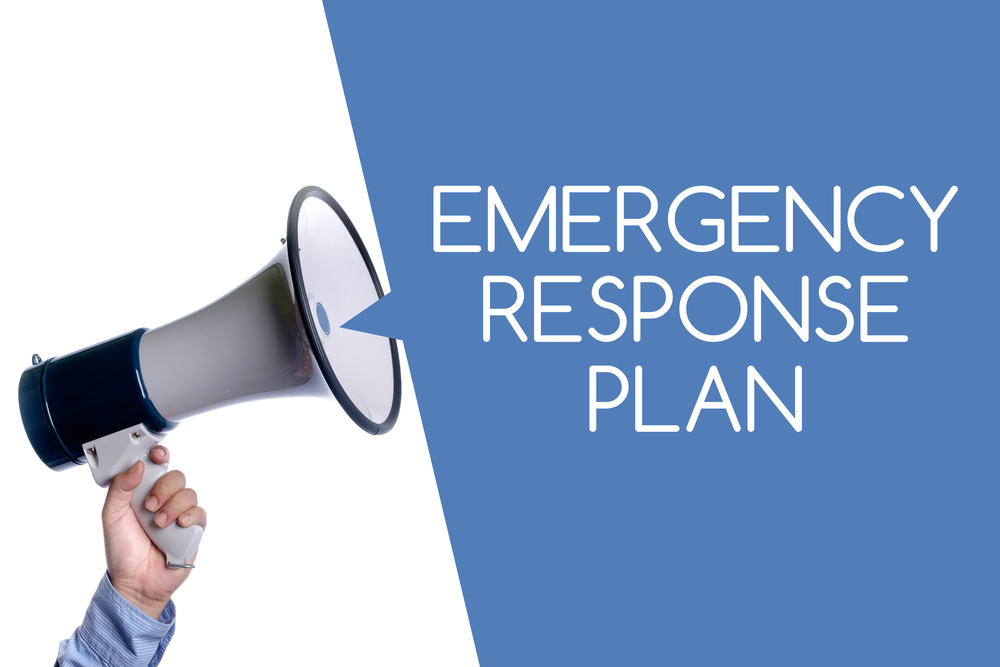Emergency Response Plans for Natural Disasters

Implementing emergency response plans for natural disasters can help organizations and groups of all types be ready, should the unthinkable strike.
To ensure that your disaster preparedness plan addresses every significant threat your organization faces, consider the importance of a detailed threat analysis. Critical Path Solutions helps organizations prepare for worst-case scenarios. We assist you in the development and implementation of an emergency response plan designed to protect your team, your facility and your organizational infrastructure.
These are some of the most common types of natural disaster preparedness plans that we can assist you with.
Earthquake Preparedness Plans
Earthquakes pose a substantial risk in several parts of the U.S. The risks include the potential for severe or fatal injuries from structural collapse as well as the risk of fire. Fires are the single biggest risk posed by earthquakes, due to the risks of broken gas lines, down or broken electrical wires, etc.
Disaster preparedness for earthquakes should include first aid training as well as training on how to use a fire extinguisher. Comprehensive and repeated drills will help support your plan to keep everyone safe in the aftermath of this significant natural disaster threat.
Windstorm & Tornado Preparedness Plans
Tornadoes, although they typically are over quickly, can leave behind incomprehensible damage. We are also seeing an increase in devastating incidents involving straight line winds and derechos. Macro- and microburst conditions are also a growing concern.
Responding appropriately under any of these potentially frightening conditions can be challenging. For that reason, organizations must go beyond simply developing and adopting a preparedness plan.
Performing rigorous practice drills is the most effective way to ensure that your team is ready when they need to be. As the global climate conditions continue to morph and change, it is also important that you revisit your plan and revise it as often as necessary.
Hurricane Preparedness Plans
Hurricanes have become a more pressing problem than ever before. In the past, the risk for significant hurricane damage was generally limited to locations along the eastern seaboard and within the Gulf of Mexico. Today, however, many named storms – tropical storms as well as hurricanes – have the energy to push well inland, leaving a swath of damage in their wake.
The good news about hurricanes is that organizations typically have ample advanced notice, allowing them to activate their emergency response plans. After a few false alarms, many individuals and organizations become jaded and lackadaisical about taking action.
Once you let your guard down, however, you make yourself and your organization vulnerable to disaster. The key to developing an effective hurricane response plan is including multiple stages of preparation and decision-making. Incorporating a range of response levels allows your organization to stay one step ahead of a looming disaster.
Power Outage Preparedness Plans
Widespread power outages can be challenging under the best possible conditions. Combine them with a situation such as severe weather, and your organization could be devastated. Fires, floods, tornados and other natural disasters can take out the power for hours, days, weeks or even months.
Developing a comprehensive blackout preparedness plan requires an in-depth analysis of your organization’s specific risks. For example, do you operate medical equipment that requires power to operate? Do you have heating or refrigeration needs for storing medicines or other critical items?
To formulate the most comprehensive blackout response plan, consider consulting with an experienced natural disaster preparedness professional. Being ready to respond in the short-, medium- and long-ranges will keep you safe and allow you to have critical continuity.
Flood Preparedness Plans
Even if you do not believe you need one, consider implementing a flood preparedness and response plan. Rapidly changing climate conditions and a crumbling national infrastructure has expanded the risk of flooding across the country.
Having plans for both sheltering and evacuation is critical, as is implementing response plans for flash flooding. Practice drills can help ensure that you and your team develop the necessary level of situational awareness. This helps you with the decision making process that you will inevitably face, should the threat of flooding strike.
Fire Preparedness Plans
The U.S. has seen an almost inconceivable increase in the number and severity of wildfires. Depending on where your facility is located, the chances of having it lost or damaged is relatively low. However, even if your physical facilities are not harmed, organizations can be devastated by a wildfire nearby.
Even if an in-depth risk analysis identifies little or no threat from wildfires, facility fires are a potential threat to every size and type of organization. Although the response plan for a structural fire will be significantly different than that for a wildfire, both are critical for keeping your team safe and for preserving irreplaceable business assets.
Developing the Best Natural Disaster Preparedness Plan for Your Organization
Your needs for a disaster preparedness plan will depend on multiple factors that are unique to your organization and situation. You deserve a truly customized plan that responds directly to the threats you face.
Critical Path Solutions designs real-world solutions for organizations of all types. Our team of experts has extensive experience in natural disaster preparedness and continuity planning. Contact us today to learn more about our comprehensive, real-world solutions, including emergency response plans for natural disasters.
